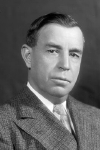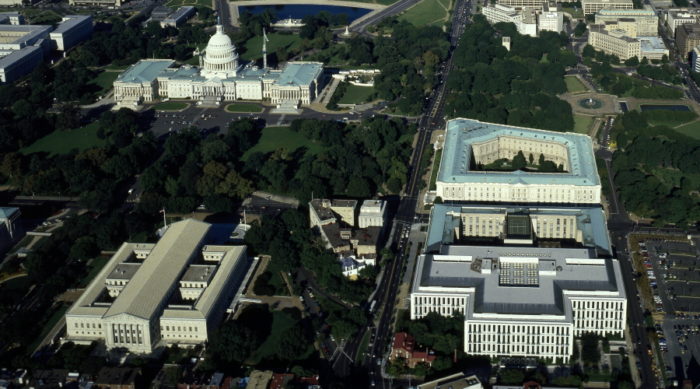
We have looked at the highs and lows of Schott’s Alley for the last month, and now it comes to its end. And a protracted end it was. The death knell rang on 1941, when the Senate realized that its office space was too limited. World War II delayed any action on this, and only in 1948 did they buy the land across from the original Senate Office Building – Schott’s Alley.
On April 19, 1949, the Senators “came face to face with a phase of the redevelopment problem that is of special concern to the Senate,” as the Washington Post reported two days later. What it meant is that they walked through Schott’s Alley and met members of some of the 50 families who would be evicted due to the new building. While there had been some talk in the original bill of funds to help resettle those who had to move, this had not been put into action.
Five months later, the Post revisited the site, this time printing a picture showing the aftermath of the demolition. Only a few of the houses on the block remain, and those are to be torn down “as soon as they are vacated – probably late this month.” The caption also mentions that Congress has blocked the funding of the construction for new Senate building, throwing the whole enterprise into question.
In fact, it would not be until July 13, 1956, that the cornerstone of what eventually became the Dirksen Building was laid. In spite of this, Schott’s Alley continued to cling to life, and when Senator Dennis Chavez of New Mexico tried to get a bill passed in the Senate that would allow the purchase of the rest of the land and its demolition for use as a Senate parking lot, he encountered resistance from a surprising quarter – a resident of the alley, and fellow member of the Senate, Norris Cotton of New Hampshire. Chavez had said that the alley housed only rats, which led to the following exchange:
“I understand” [Cotton] said, “that only rats live in Schott’s Court!”
“Isn’t that so?” asked Chavez.
“I suppose it depends upon the political viewpoint,” said Cotton. “It is infested by Republicans.”
“Name a few!” challenged the chairman.
“Well – I live there, for one. And so does Senator Karl Mundt, of South Dakota. So does former Senator George Bender, of Ohio.”
This all came as a surprise to Chavez, and Cotton continued in this vein for a while, including the threat to “arise on the Senate floor on a point of personal privilege to answer your slur on the fair name of our alley.”
Nonetheless, Cotton, who had not been entirely serious in his outburst, voted, along with the rest of the committee, to confiscate the land.

In spite of this, Schott’s managed to hang in there for at least a few more years, and even showed some signs of its old raffish ways when the Washington Post reported in 1966 that a new club, the 116 Club had opened at 116 Schott’s Alley. A successor of the old Quorum club, which had come under public scrutiny in the course of the investigation into Bobby Baker, it was a place for powerful men to get together with each other – and attractive women – away from the gimlet eye of the press (and, presumably, the wives of the powerful men)
The club lasted at that address no more than ten years (it is now on 3rd Street NE). In 1976, ground was broken for the Hart Senate Office Building, which covered that ground of Schott’s Alley that was not already taken by the Dirksen Building. In 1982, the new offices opened, ending, once and for all, the illustrious history of Schott’s Alley.
